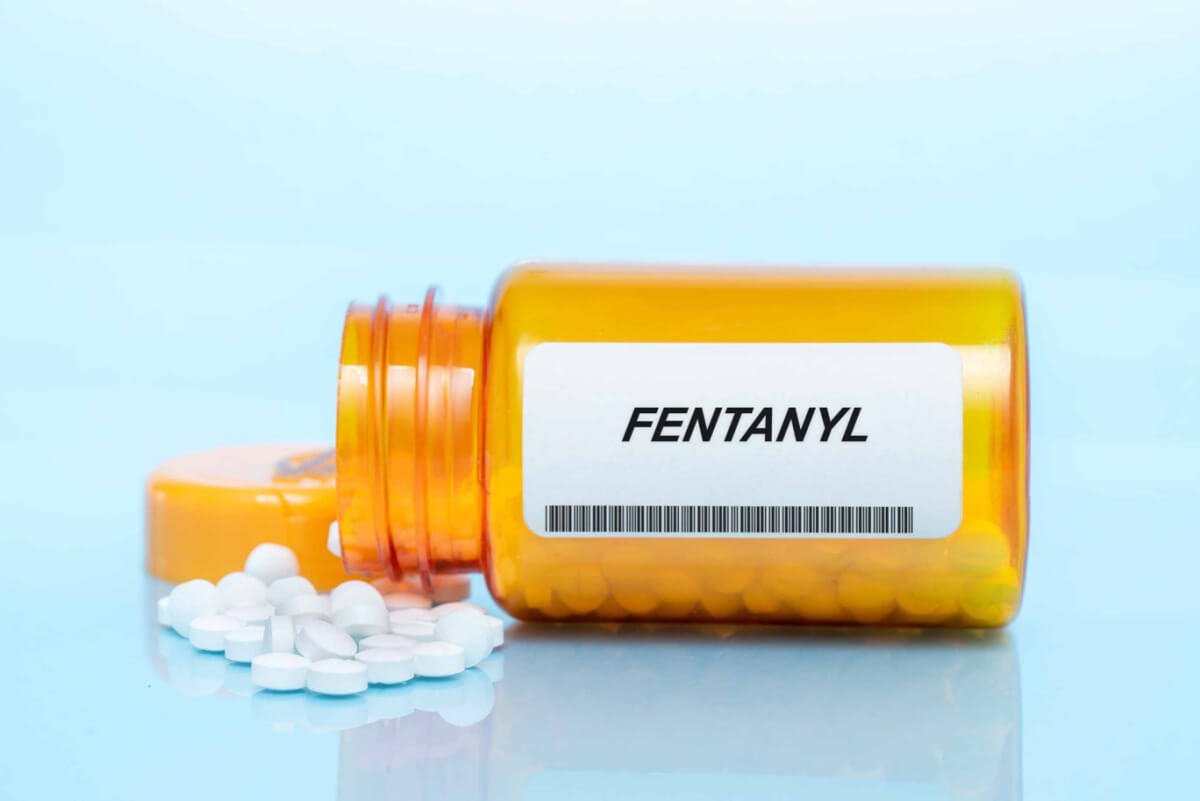China And The Fentanyl Epidemic: The Price Of Inaction

Table of Contents
China's Role in Fentanyl Production
China's contribution to the fentanyl crisis is multifaceted and deeply concerning. The country's involvement extends beyond mere transit; it plays a crucial role in the production and distribution of the precursor chemicals that are essential for fentanyl synthesis.
Precursor Chemical Exports
China's export of precursor chemicals is a major driver of the global fentanyl crisis. The sheer volume of these exports, coupled with insufficient regulation, allows illicit actors to easily acquire the materials needed to produce massive quantities of fentanyl.
- Statistics on precursor chemical exports: While precise figures are difficult to obtain due to the clandestine nature of the trade, reports indicate a significant increase in the export of specific chemicals known to be used in fentanyl production in recent years.
- Examples of specific chemicals: Chemicals like aniline, piperidine, and N-phenethylpiperidine are commonly exported from China and are crucial components in fentanyl synthesis.
- Loopholes in existing regulations: Existing regulations often lack the specificity and enforcement mechanisms needed to effectively control the flow of these precursor chemicals. Many chemicals are easily obtained under the guise of legitimate industrial uses.
- Ease of access for illicit actors: The relatively easy access to these precursor chemicals, combined with readily available online synthesis instructions, makes fentanyl production accessible to even small-scale clandestine laboratories.
Domestic Fentanyl Production
Evidence suggests that fentanyl production is also occurring within China itself. This domestic production further contributes to the global supply, complicating efforts to stem the flow of this deadly drug.
- Evidence of domestic labs: Reports indicate the existence of clandestine fentanyl production labs within China, though the exact number and scale remain largely unknown.
- Links to organized crime: Fentanyl production and trafficking are closely linked to organized crime networks operating both domestically and internationally.
- Challenges in law enforcement efforts: Law enforcement agencies face significant challenges in detecting and disrupting these clandestine operations due to their decentralized nature and sophisticated methods.
- The potential for domestic consumption to rise: The increasing availability of fentanyl within China raises concerns about a potential rise in domestic consumption and addiction.
Weaknesses in Chinese Regulatory Frameworks
The effectiveness of China's regulatory framework in combating the fentanyl crisis is severely hampered by various weaknesses. These shortcomings necessitate significant improvements in oversight and enforcement.
- Examples of insufficient oversight: Current regulations lack sufficient specificity and oversight, making it challenging to effectively track and control the flow of precursor chemicals.
- Difficulties in enforcement: Even when violations are detected, enforcement remains a significant challenge due to limited resources, corruption, and the complexities of international collaboration.
- Lack of international collaboration on regulatory standards: The absence of globally harmonized regulatory standards for precursor chemicals hinders effective international cooperation in combating the fentanyl trade.
- Corruption issues: Corruption within regulatory agencies can further undermine efforts to control the flow of precursor chemicals and disrupt criminal networks.
The Global Impact of China's Fentanyl Trade
The consequences of China's role in the fentanyl trade are devastating and far-reaching, impacting global health, healthcare systems, and national security.
Deaths and Overdoses
The staggering number of overdose deaths worldwide linked to fentanyl underscores the human cost of China's involvement in the global opioid crisis.
- Statistics on overdose deaths in various countries: The number of overdose deaths attributed to fentanyl and its analogues continues to rise dramatically in North America, Europe, and other regions.
- Impact on different demographics: Fentanyl's devastating impact disproportionately affects specific demographics, including young adults and marginalized communities.
- The potency of fentanyl and its contribution to the crisis: Fentanyl's extreme potency makes it particularly dangerous, contributing significantly to the high number of overdose deaths.
Strain on Healthcare Systems
The fentanyl crisis places an immense strain on healthcare systems worldwide, consuming substantial resources and impacting the ability to provide care for other health issues.
- Costs of emergency care: Treating fentanyl overdoses requires significant resources, including emergency medical services, hospitalizations, and intensive care.
- Long-term rehabilitation needs: Individuals who survive fentanyl overdoses often require extensive long-term rehabilitation and support.
- Strain on law enforcement resources: Law enforcement agencies are stretched thin by the increased workload associated with investigating fentanyl-related crimes.
- Socio-economic impact of the epidemic: The fentanyl epidemic has significant socio-economic consequences, including lost productivity, increased healthcare costs, and the disruption of families and communities.
National Security Implications
The fentanyl trade is deeply intertwined with transnational organized crime, posing significant national security threats.
- Links to other illicit activities: Fentanyl trafficking is often linked to other criminal activities, including money laundering, arms trafficking, and human trafficking.
- Potential for violence and instability: Competition among criminal groups involved in the fentanyl trade can lead to increased violence and instability in affected regions.
- Impact on international relations: The fentanyl crisis can strain international relations as countries grapple with the shared challenge of combating this transnational threat.
The Need for International Cooperation
Combating the fentanyl crisis requires a concerted global effort, focusing on strengthening regulatory frameworks, enhancing law enforcement partnerships, and promoting public awareness.
Strengthening Regulatory Frameworks
International collaboration is paramount in improving the regulation and monitoring of precursor chemical exports.
- Suggestions for improved international monitoring systems: Enhanced data sharing and tracking mechanisms are needed to monitor the flow of precursor chemicals globally.
- Proposals for stricter regulations: International agreements are needed to establish stricter regulations on the production, export, and import of precursor chemicals.
- Collaboration on intelligence sharing: Improved intelligence sharing among countries is crucial for identifying and disrupting fentanyl trafficking networks.
Enhanced Law Enforcement Partnerships
Closer collaboration between law enforcement agencies is essential to effectively disrupt fentanyl trafficking networks.
- Cross-border operations: Joint operations between law enforcement agencies in different countries are critical for targeting transnational criminal organizations.
- Intelligence sharing: Real-time intelligence sharing is essential for effective law enforcement responses.
- Joint investigations: Collaboration on joint investigations can lead to the dismantling of complex criminal networks.
- Asset seizure strategies: Strategies for seizing assets obtained through fentanyl trafficking are crucial for disrupting financial flows and weakening criminal organizations.
Public Awareness Campaigns
Public awareness campaigns are vital in educating people about the dangers of fentanyl and its devastating consequences.
- Target audiences: Campaigns should target diverse audiences, including young people, healthcare professionals, and first responders.
- Campaign strategies: Effective campaigns require innovative strategies using various media platforms to reach target audiences.
- Public health messaging: Clear and concise messaging about the dangers of fentanyl and the availability of treatment is critical.
- Community outreach programs: Community-based programs can help reach at-risk individuals and families.
Conclusion
The fentanyl epidemic represents a grave global health crisis, with China playing a significant role. The continued inaction and insufficient regulation regarding precursor chemicals are fueling this tragedy, resulting in countless deaths and overwhelming healthcare systems worldwide. Addressing this crisis demands immediate and decisive action. International cooperation, strengthened regulatory frameworks, enhanced law enforcement partnerships, and focused public awareness campaigns are crucial steps in combating the devastating effects of the China and the fentanyl epidemic. We must act now to prevent further loss of life and mitigate the long-term consequences of this global health emergency. The price of inaction is simply too high.

Featured Posts
-
 Steffens Subpar Performance Leads To Earthquakes Loss Against Rapids
May 15, 2025
Steffens Subpar Performance Leads To Earthquakes Loss Against Rapids
May 15, 2025 -
 Padres Vs Rockies Can San Diego Finally Dominate The Series
May 15, 2025
Padres Vs Rockies Can San Diego Finally Dominate The Series
May 15, 2025 -
 Diddy Sex Trafficking Trial Cassie Venturas Explosive Testimony
May 15, 2025
Diddy Sex Trafficking Trial Cassie Venturas Explosive Testimony
May 15, 2025 -
 Vont Weekend 2025 A Look Back At April 4th 6th 107 1 Kiss Fm
May 15, 2025
Vont Weekend 2025 A Look Back At April 4th 6th 107 1 Kiss Fm
May 15, 2025 -
 Braves Vs Padres Prediction Atlantas Chances For Victory
May 15, 2025
Braves Vs Padres Prediction Atlantas Chances For Victory
May 15, 2025
